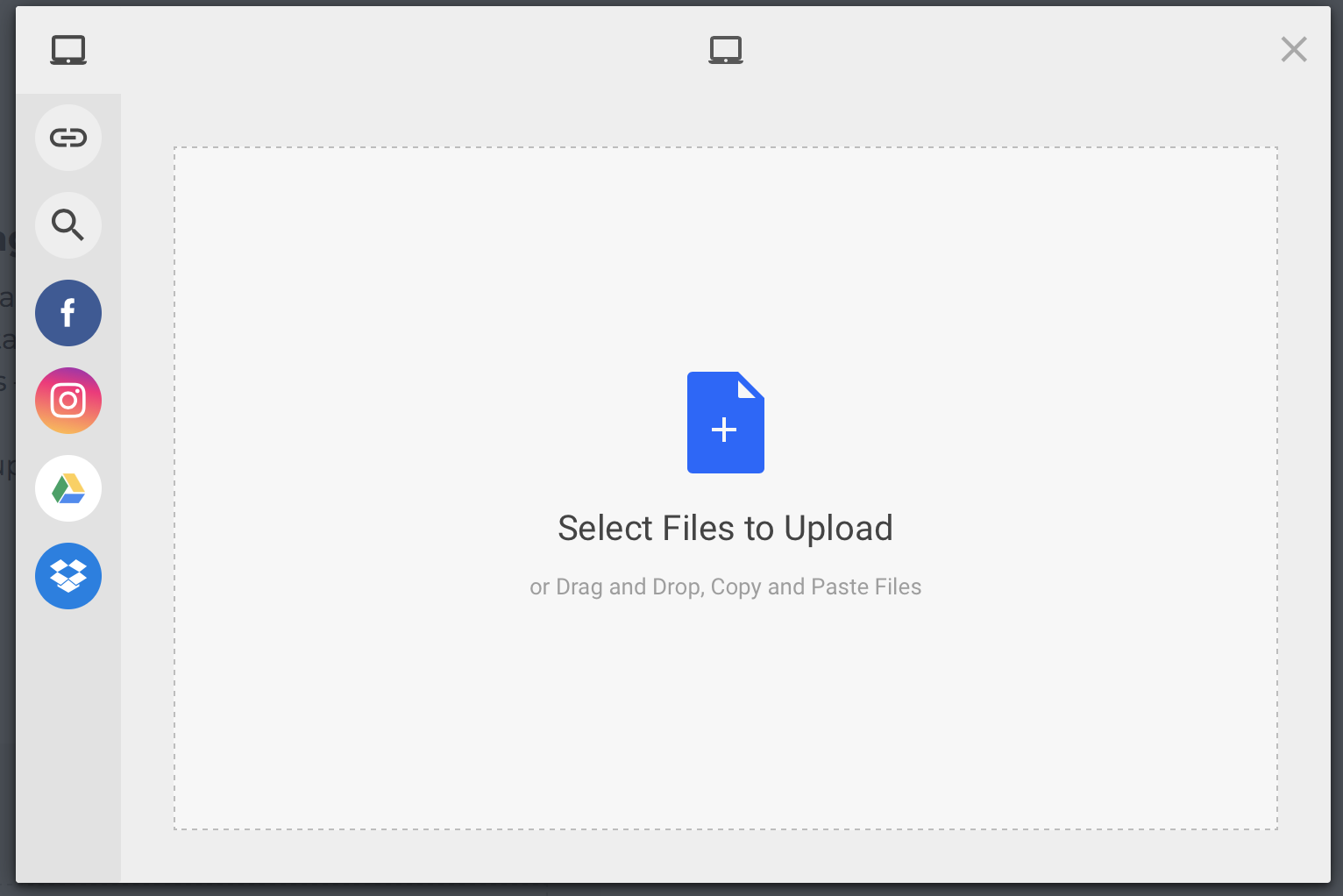Whether you are at your workplace, working from home, on a vacation, or traveling on a plane, sharing and uploading files is an essential feature that you always want to have access to. This is where a JavaScript file upload capability comes into play. Keeping the importance of file sharing in mind, we understand how frustrating it can be when a file upload fails. In this blog, we have outlined some of the most common reasons behind file upload failure, including issues with Windows, cache, and file size. Continue reading to discover some typical scenarios, which lead to failed file uploading attempts, and how to resolve them. We also show you how Filestack’s JavaScript file uploader can solve most file upload troubles.
Keeping the importance of file sharing in mind, we understand how frustrating it can be when a file upload fails. In this blog, we have outlined some of the most common reasons behind file upload failure. Continue reading to discover some typical scenarios, which lead to failed file uploading attempts, and how to resolve them. We also show you how Filestack’s JavaScript file uploader can solve most file upload troubles.
What Are The Common Reasons Behind File Upload Failure?
Here we list a few common reasons that lead to file upload failure, and some options for solving these problems.
1. Is Your Filename Correct?
A common cause of file upload failure is an incorrect filename or a filename that is incompatible across different systems. For example, some operating systems accept filenames with special characters like &, !, #, and more. Many operating systems even allow white spaces within a filename. However, many servers or other operating systems may not allow these characters. This can cause the file upload to fail.
How To Resolve An Issue With The Filename?
The best way to resolve this issue is to check your filename and make sure it is valid. Do not include white spaces, hyphens, or other characters in the filename. Simplify the name by sticking to only letters and numbers.
2. Is Your File Extension Correct?
Another common reason for file upload failure is caused by the type of file being uploaded. Normally, a server determines the file type by using the filename’s extension. For example, many servers do not allow uploads of executable files as they might cause a breach in security. Such files have a .exe extension.
How To Resolve The Issue With File Type?
To resolve the issue with file type, check your file extension. Make sure that the type of file you are uploading is valid, and that the remote server allows it.
3. Is Your Computer On Hibernate Mode?
Another common issue with file upload is that your computer might be configured to sleep or switch to hibernate mode after a certain interval of time. If you are uploading a large file and the computer goes into hibernate mode during the upload, then the file upload is very likely to fail. When your computer goes into hibernate mode, the server stops receiving data from your computer and terminates the connection, resulting in a file upload failure.
How To Troubleshoot Automatic Hibernate Mode?
To resolve this issue, check your computer’s settings. If you have set it to sleep or hibernate after a certain interval of time, then you can increase that time interval. Alternatively, you can turn off this setting during important file uploads.
4. Is There An Issue With Your Browser?
Your browser may have issues with large file uploads. If your browser is very old and you have not updated it with the latest version, it may cause large file uploads to fail. For example, your browser may not be able to deal with files larger than 100 MB.
How Do I Deal With Browser Limitations?
There is a simple solution to browser limitations when it comes to file uploading. The best way is to update your browser with its latest version. If this does not work, then you can try installing another browser on your computer. This should resolve your problem.
5. Is There A Timeout Issue?
This is a very common issue with file uploads. Many remote servers timeout after a certain interval of time. This time interval can be as small as 30 seconds. Hence, if you are trying to upload a large file of the order of gigabytes or even larger than 100 MB and you have a smaller bandwidth, then uploading your file will take a long time. In such a case, the server will timeout during file upload.
Is It Possible To Overcome The Timeout Issue With JavaScript File Upload?
Luckily, there are a few possibilities to overcome the issue of server timeouts. One method is to split your file into smaller chunks using JavaScript Blob API and reassemble it at the server end. This is available in many browsers. Another great solution is to use Filestack’s JavaScript file upload, as discussed later in this blog.
6. Do You Have A Good And Fast Wi-Fi Connection?
Another common issue with file uploads is a bad Wi-Fi connection or a smaller bandwidth offered by your Wi-Fi. This can cause connectivity issues with your server and a failure in large file uploads.
How Do I Deal With Poor Wi-Fi Connections?
Unfortunately, there aren’t many options for bad Wi-Fi connections. You can try moving to a spot with better Wi-Fi reception. Alternatively, you can switch to a wired connection or a faster network.
How Does Filestack’s JavaScript File Upload Resolve Issues?
Filestack offers fast, robust, reliable, and secure file uploader and APIs. It makes all types of file access easy and reliable. Moreover, you can connect to many online accounts effortlessly as Filestack handles all the integrations for you.
Suppose you are looking to solve all the issues that users face with file uploads as a developer. In that case, Filestack offers great solutions for you. Filestack’s file API can be called from JavaScript, Java, Python, or any other programming language that supports HTTP requests. With a powerful, user-friendly API, you can access user content from anywhere and significantly enhance any file or video upload. Filestack offers several ways for uploading files.
With Filestack’s JavaScript file upload you can do basic uploads, multipart uploads, cloud uploads, and more. You can integrate file upload into any web form, use drag and drop in JavaScript file upload, use JavaScript file upload to enhance your users’ experience in your web app, and much more.
So what are you waiting for? Sign up for free and get the best JS file upload experience with Filestack!
Filestack is a dynamic team dedicated to revolutionizing file uploads and management for web and mobile applications. Our user-friendly API seamlessly integrates with major cloud services, offering developers a reliable and efficient file handling experience.
Read More →

